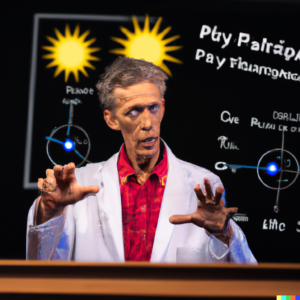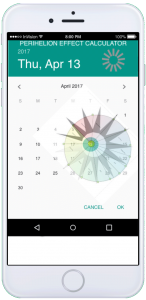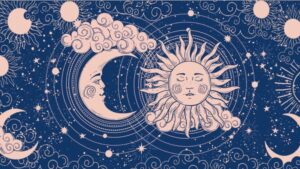Translation 1: To test his hypothesis that sunspot cycle influenced human activity, Tchijevsky constructed an Index of Mass Human Excitability covering each year form 500 BC to 1922 AD. He then investigated the histories of 72 countries during that period, noting signs of human unrest such as wars, revolutions, riots, expeditions and migrations, plus the numbers of humans involved. Tchijevsky found that fully 80% of the most significant events occurred during the 5 years of maximum sunspot activity.
Translation 2: By these comparisons he constructed an “Index of Mass Human Excitability” covering each year from 500 B.C. to 1922 A.D. He investigated the histories of 72 countries in that period, noting signs of human unrest such as wars, revolutions, riots, expeditions and migrations, plus the number of humans involved. Tchijevsky found that fully 80% of the most significant events occurred during the years of maximum sunspot activity. He maintained that the “exciting” period may be explained by an acute change in the nervous and psychic character of humanity, which takes place at sunspot maxima.
Tchijevsky, a Russian scientist, who presented a paper to the American Meteorological Society at Philadelphia in the late 19th century. He prepared a study of the history of mass human movement compared to the solar cycle, beginning with the division of the Solar cycle into four parts: 1) Minimum sunspot activity; 2) increasing sunspot activity; 3) maximum sunspot activity; 4) Decreasing sunspot activity. He then divided up the agitation of mass human movements into five phases:
- provoking influence of leaders upon masses
- the “exciting” effect of emphasized ideas upon the masses
- the velocity of incitability due to the presence of a single psychic center
- the extensive areas covered by mass movements
- Integration and individualization of the masses
Tchijevsky discovered that the solar minimum is the lag period when repression is tolerated by the masses, as if they lacked the vital energy to make the needed changes. He found that during the sunspot maximum, the movement of humans is also at its peak. Tchijevsky’s study is the foundation of sunspot theory on human behavior, and as Harlan True Stetson, in his book Sunspots and Their Effects (available from BSRF), stated, “Until, however, someone can arrive at a more convincing excitability quotient for mass movements than professor Tchijevsky appears yet to have done, scientists will be reluctant to subscribe to all the conclusions which he sets forth.” Stetson did acknowledge that the mechanism by which ultraviolet radiation is absorbed was still a puzzle biologists had to solve.

The mechanism behind the stimulation of human behavior is still a mystery, but the theories of Georges Lakhovsky may shed some light. He considered his book, “The Secret of Life” (reprinted by BSRF), the extension of a scientific hypothesis of a new theory of life. The Sun is one of Earth’s primary sources of cosmic radiation. While the Sun does produce its own radiations, solar winds actually capture passing cosmic dust and radiation and blow it into the earth’s atmosphere. While it may seem frightening to some, this can actually be considered the Primal Vibration that sets the cells vibrating with Vital Force. This is the Prana, that Cosmic Breath, which is meant to vitalize man, and is the source for our evolution.



